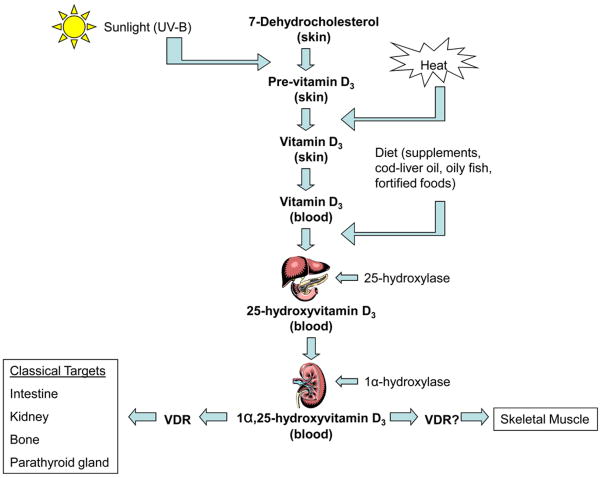Figure 1.
Synthesis of vitamin D3 occurs in the skin where 7-dehydrocholesterol is converted to pre-vitamin D3 in response to sunlight (ultraviolet B radiation) exposure. Vitamin D3 is produced from the isomerization of pre-vitamin D3 in the skin or intestinal absorption of natural and fortified foods and supplements. Vitamin D3 (bound to vitamin D-binding protein) circulates in the bloodstream, and is transported to the liver where it is hydroxylated by liver 25-hydroxylases. The resultant 25-hydroxyvitamin D3 is hydroxylated to the active secosteroid 1α,25(OH)2D3 in the kidney by 1α-hydroxylase. 1α,25(OH)2D3 acts on various target tissues via its receptor (VDR). 1α, 25(OH)2D3 appears to affect other nonclassical target tissues such as skeletal muscle possibly via the VDR.

